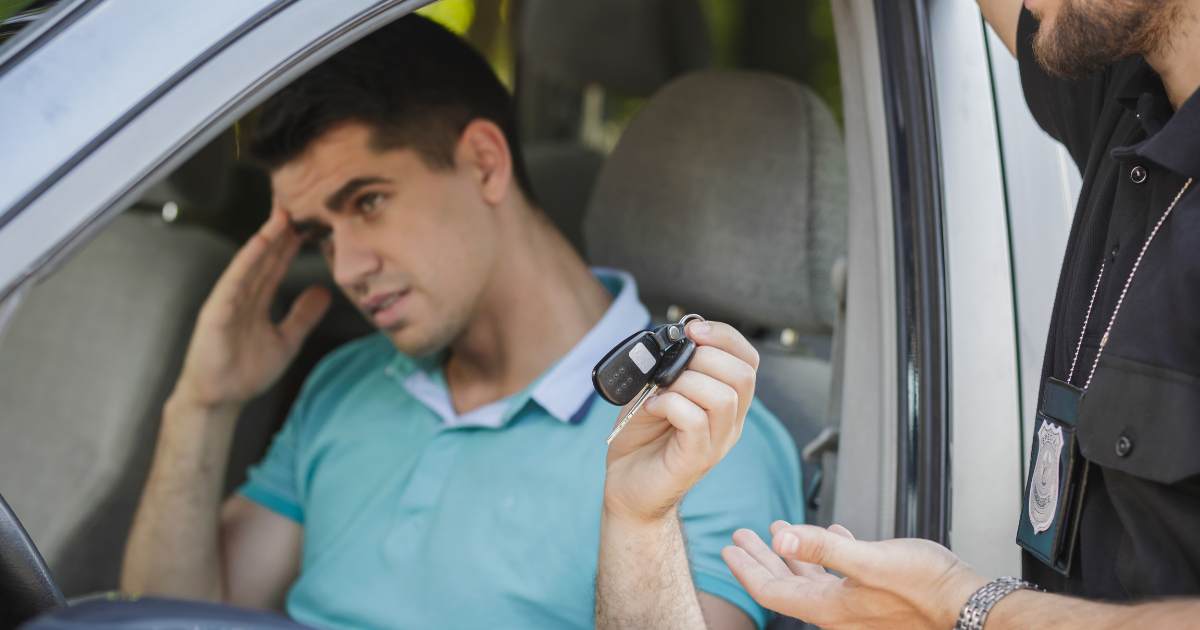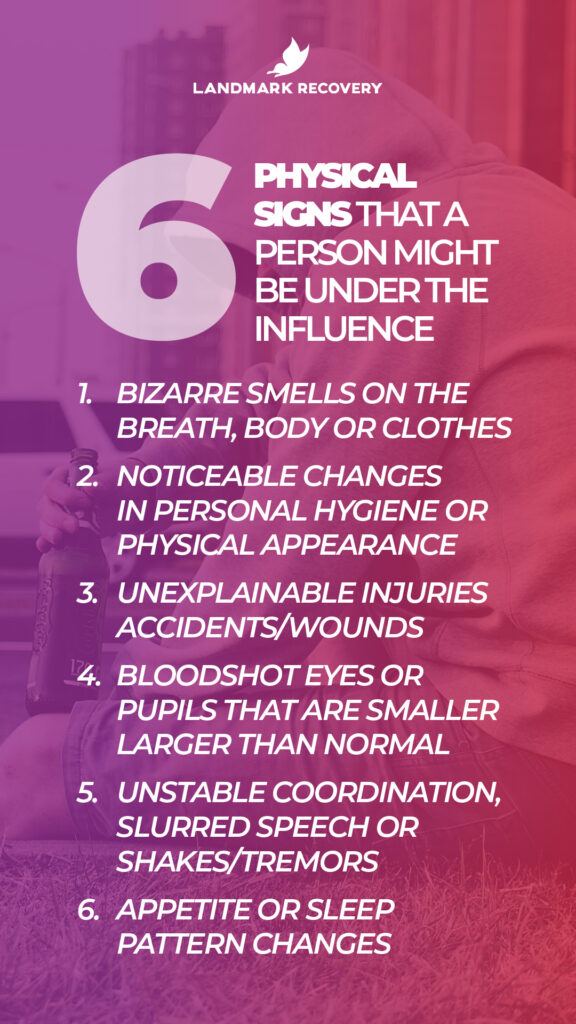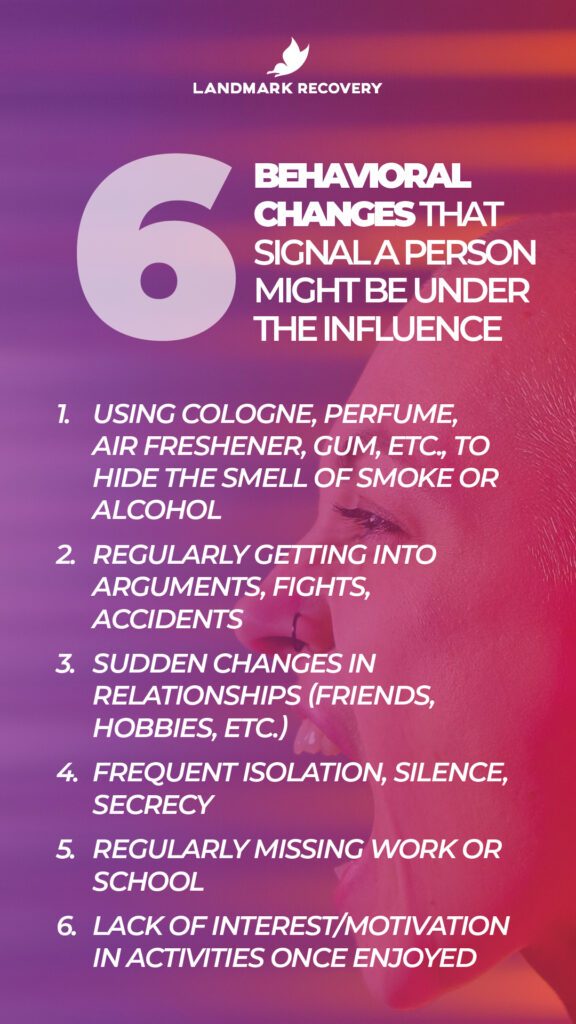What does it mean to be “under the influence” of drugs and alcohol? If you’ve ever witnessed or personally experienced being pulled over by police, you might’ve heard the term. It could mean a person had too many alcoholic drinks, is visibly “drunk,” and is acting aggressively. To others, it could mean being “stoned” or “high” on a mind-altering drug. Being under the influence can mean different things depending on the substances a person has consumed.
Recommended: How long do drugs stay in your system?
Substance use affects every person differently. Research shows that people under the influence of alcohol or psychostimulants like cocaine are known to be more aggressive. On the other hand, drugs like cannabis (marijuana) have been known to slow reaction time and distort reality.
@landmarkrecovery #duet with @getliftedddd #fypシ One day at a time my friend ❤️❤️ #addictionrecoveryhumor #weinthistogether #futuretripping #sobrietyhumor #welcometothegoodlife
This blog explores what it means to be under the influence, including how long it takes to become under the influence of certain substances. It also explains how being under the influence can present health risks, like drug and alcohol addiction.
What does being “under the influence” mean?
Cornell Law School defines being “under the influence” as “impairment, to any degree, of an individual’s ability to safely perform the activity in question as a result of the use of alcohol, drugs, or a combination of both.” Law enforcement officials in the majority of the United States consider any person with a blood-alcohol concentration (BAC) of 0.08% or high to be legally under the influence of alcohol, for example. If the person is found operating a motor vehicle (car, motorcycle, truck, etc.), they could be charged with driving under the influence (DUI). However, they need evidence of intoxication.
How to tell if someone is under the influence
Law enforcement officials trained as drug recognition experts (DREs) who suspect a person to be under the influence can give people standard field sobriety tests (SFSTs) during traffic stops. These could include:
- A breath alcohol test (Breathalyzer)
- Eye exam (Horizontal/vertical gaze nystagmus)
- Divided attention psychophysical tests (one-leg stand, walk and turn, finger-to-nose test, etc.)
- Ordering a toxicological exam if a breathalyzer test or field test is failed (Saliva, blood, urine tests)
Top six physical signs a person might be under the influence
Here are six physical signs that a person might be under the influence:
- Bizarre smells on the breath, body or clothes
- Noticeable changes in personal hygiene or physical appearance
- Unexplainable injuries/accidents/wounds
- Bloodshot eyes or pupils that are smaller/larger than normal
- Unstable coordination, slurred speech or shakes/tremors
- Appetite or sleep pattern changes
Top six behavioral changes to that signal person might be under the influence
Here are six behavioral changes that signal a person might be under the influence:
- Using cologne, perfume, air freshener, gum, etc., to hide the smell of smoke or alcohol
- Regularly getting into arguments, fights, accidents
- Sudden changes in relationships (friends, hobbies, etc.)
- Frequent isolation, silence, secrecy
- Regularly missing work or school
- Lack of interest/motivation in activities once enjoyed
How do people consume drugs and alcohol?
Before drugs affect the brain and produce a “high” feeling, they must enter the body and be absorbed into the bloodstream. The number of time drugs or alcohol take to According to the National Institute on Drug Abuse (NIDA), people consume drugs using the following methods:
- Drink (alcohol or cannabis-infused beverages)
- Swallow (pill or edibles)
- Snort (powder)
- Inject (powder dissolved in water/alcohol)
Smoking is generally the fastest way to feel the effects of drugs. When it comes to alcohol, researchers have found that the body absorbs alcohol the fastest when mixed with a carbonated liquid or still (non-carbonated) water. That explains why sodas are popular alcohol mixers.
They help produce the depressant effects of alcohol faster. Swallowing drugs and alcohol can reduce the effects delivered to the brain, which is why people typically choose to smoke and snort substances. There are fewer hurdles to clear, such as digestion in the stomach and small intestine, to get drunk or “high.”
What influences drug absorption?
Drug and alcohol absorption can be hindered or helped by a number of factors:
- How fast the body metabolizes (breaks down) a substance
- How you consume substances (smoke, eat, drink, etc.)
- How empty or full your stomach is when you ingest a substance
- Tolerance level
- Type of substance
- Medications taken
- Pre-existing medical conditions
- Gender
- Hormone differences
- Height and weight
With that being said, let’s look at how long it takes commonly used substances to work in the body.
How long does it take for alcohol to kick in?
Alcohol’s effects begin to show quickly, even if a person doesn’t immediately notice. Alcohol reaches the brain in only five minutes and interferes with its communication pathways. This can affect a person’s coordination, balance and judgment. After a few sips of a standard drink (1.5 ounces of distilled spirits, 12 ounces of beer or ounces of wine), a person will generally feel the effects within 10 minutes.
Alcohol is absorbed through the stomach lining into the bloodstream, where it’s distributed throughout the body. That includes the liver, which breaks down most of the alcohol so it can be removed from the body. The liver can process and eliminate one ounce of liquor in one hour. Any more than this, and the liver can’t work properly, leaving the excess alcohol to build up in the blood and body tissues until it can be broken down.
This explains why taking multiple shots or “chugging” beer can lead to high BAC levels that last for several hours.
Drinking on an empty vs full stomach
The body absorbs alcohol into the bloodstream faster when a person drinks on an empty stomach. This is because there is no food to be digested, which can slow the rate of alcohol absorption. The effects happen even faster when the concentration of alcohol is 20-30%. For example, sherry with an alcohol concentration of about 20% increases the levels of alcohol in the blood faster than a standard beer, which is 3-8% alcohol. Blood alcohol concentration (BAC) peaks about one hour after you drink on an empty stomach. The legal limit for BAC levels is 0.08%.
Drinking with food in the stomach delays alcohol absorption, but doesn’t stop it.
Recommended: What Is Delirium Tremens in Alcohol Withdrawal?
How long does it take for cocaine to kick in?
Cocaine’s short-term effects happen almost immediately after a single dose. The stimulant produces brief, but intense feelings of euphoria and alertness. The “high” usually lasts between 15 and 60 minutes. Snorting cocaine produces a slower high but only lasts between 15 and 30 minutes. Smoking cocaine creates a more immediate high, but only lasts between five to 10 minutes.
The brief, euphoric feelings might cause a person to consume more of the substance to regain the effects. Some people mix cocaine with alcohol or another drug to extend the high. However, this type of drug experimentation increases the risk of adverse effects, such as showing signs of addiction or experiencing a fatal overdose.
Recommended: What is the Cocaine High and How Does it Feel?
How long does it take marijuana to kick in?
Marijuana (cannabis), the most commonly used illegal federal drug in the United States, takes between two and 10 minutes to produce mind-altering effects. That’s usually if a person smokes the substance, which is the most common way to consume it, either in hand-rolled “joints” or emptied cigars refilled with marijuana. When a person smokes marijuana, the tetrahydrocannabinol (THC) chemical found in it quickly passes from the lungs into the bloodstream.
The blood carries the chemical to the brain and other organs throughout the body, producing euphoria and relaxation. If people mix marijuana in food (edibles), such as brownies or cookies, the body absorbs the tetrahydrocannabinol (THC) found in it more slowly. They’ll generally feel the effects after 30 minutes to one hour.
Recommended: Is Marijuana Addictive?
How long does it take opioids to kick in?
The painkilling effects of opioids vary depending on how the drugs are taken. When a person swallows an opioid pain pill, such as OyContin, the effects happen slowly and are usually felt in about 10 to 20 minutes. It must dissolve in the stomach and intestines before it’s absorbed into the bloodstream.
On the other, when an opiate like heroin is injected into a vein, the effects are most intense and generally felt within one minute. That’s because it reaches the bloodstream instantly and is carried into the brain. There, it binds to opioid receptors and blocks the body from feeling pain.
Recommended: A Fresh Take on the Opioid Crisis
How drugs work
Body composition, the type of drug and how much and how often people consume drugs all determine how long it takes for their effects to kick in. With that in mind, it’s important to know how the body breaks down drugs and alcohol, as well as to monitor how much you’re consuming to avoid harmful effects. Anyone can develop a high tolerance for drugs and alcohol, which can lead to addiction or chemical dependence.
Know the signs of addiction, and contact a treatment provider immediately if you or a loved one struggles with the adverse effects of drugs and alcohol. Healthcare experts recommend detox at a licensed treatment facility to safely remove harmful substances from the body. Call 888-448-0302 for more information on addiction and recovery support.

Choose Recovery Over Addiction
We're here 24/7 to help you get the care you need to live life on your terms, without drugs or alcohol. Talk to our recovery specialists today and learn about our integrated treatment programs.






